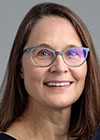Practical Significance Take Two—Exploring ASA Sections and Interest Groups
This interview with Susan Paddock, executive vice president and chief statistician at NORC at the University of Chicago; Sharina Person, professor and vice chair of the department of population and quantitative health sciences at the University of Massachusetts Chan Medical School; and Wendy Martinez, senior mathematical statistician for data science at the US Census Bureau, was conducted by Practical Significance co-hosts Donna LaLonde and Ron Wasserstein during a recent podcast.
Ron Wasserstein: What motivated you to join a section and then eventually become the leader of a section?
Sharina Person: I joined the Biometrics Section at the same time I joined the ASA, while I was in graduate school. As a trained biostatistician, the Biometrics Section was just a natural fit that aligned with my training and the focus of my career at the time. I’ve always benefited from the resources and training provided by the section but was on the margin, if you will.How I got into leadership is a funny story. I got a call out of the blue from a colleague at a local institution who asked if I would be interested in running for a leadership position. I didn’t think I would win because I didn’t feel like anybody knew me or I had the credibility because of not being as active in the section as I could have been, but who knew I would end up winning?
And it was one of the best decisions I could have made because it not only provided me the ability to connect with other statistical professionals nationally and internationally who I may not have had an opportunity to connect with before, but it also allowed me to give back. I’ve been enjoying the time that I’ve been in this role and am a little sad it’s ending this year.
Susan Paddock: Similar to Sharina, I started in sections when I was a graduate student. I did my dissertation on nonparametric Bayesian methods at Duke University. And the Bayesian Statistics Section was a natural entry point when I was a graduate student. For me, it was important to be active in that section for a whole host of reasons—networking and just being part of a community. I was meeting other people who were coming out of graduate programs around the same time, and so that was a lot of fun.My section memberships mirror the course of my career. For the first 15 or so years of my career, I was in and out of the Bayesian Section and Health Policy Statistics Section as an officer. Those sections were particularly important for my career development. And that’s interesting because they’re quite different sections. That’s one thing I really like about the ASA sections—there is such a variety. There are so many ways to find relevant and extremely helpful communities.
Wendy Martinez: Like Susan and Sharina, I became a member of the ASA as a student. I was first introduced to ASA sections by my PhD adviser, Ed Wegman. He was heavily involved with the Statistical Computing and Statistical Graphics sections when I was working on my PhD. I was hanging around with him at my first JSM [Joint Statistical Meetings] and went to their section mixer. It was such a wonderful way to meet people because you’re in this relaxed atmosphere.I just remember I thought, “Wow, this is just a great group of people and I want to be part of it.” I joined the sections and, at that time, I worked for the US Navy as a civilian and the Defense and National Security Section was just getting established.
Once it was established, they needed candidates to run for some of the offices and I volunteered. I was elected, which also was a surprise, but that was the start of my ASA leadership journey.
Ron Wasserstein: Susan, I’m going to get back to you for the next question. Donna mentioned your role in the Council of Sections Governing Board, and I expect some ASA members don’t know what that is. What does the Council of Sections Governing Board do, and what sort of things is it up to these days?
Susan Paddock: The Council of Sections Governing Board supports members of the ASA as they pursue their scientific and statistical interests. The support is through the creation of sections and interest groups. The governing board has the role of promoting coordination and cooperation across sections and serves as a voice for sections at the ASA board level.
The Council of Sections is a particularly important and interesting entity within the ASA. When I first became a Council of Sections representative for a section, it opened my eyes to how the ASA works. I certainly recommend serving in that role.
The Council of Sections provides a way to make sure the issues that are important to one section are heard throughout the broader ASA. I should probably explain that sections are groups of at least 200 ASA members who are organized around a particular statistical approach or statistical area of practice or some sort of theme. This allows the sections to contribute to the JSM program formally in terms of having invited and topic-contributed sessions, other sessions, activities, etc.
Sections often initiate other activities, as well, such as webinars or conferences. Interest groups can be started with a petition of 25 ASA members. However, unlike sections, interest groups do not need to have all their members involved with the ASA, so interest groups can be effective for outreach. In fact, this year, we have two new interest groups that exemplify this. One is called the Partnership for Clinical Research and Statistics. One of their main goals is to be a voice in the clinical research community and consult with other professional organizations in that space. The other interest group is the Privacy and Confidentiality Interest Group, a wide-ranging and important topic, as well, that touches a lot of areas.
In terms of what the Council of Sections Governing Board is focusing on this year, we sponsored a JSM workshop for section officers to discuss the findings from the ASA’s Anti-Racism Task Force report and what the report means for sections. Another initiative is monitoring the health of sections. We conduct an annual survey to find out what activities the sections are undertaking for their members, which can spark ideas across the Council of Sections when sections hear about what others are doing—such as newsletters or social media campaigns. We are also discussing conferences with sections, making sure the communication channels between sections and the ASA are open, such as understanding to whom to reach out when a section is thinking about organizing a conference.
Donna LaLonde: We’re going to focus on what Biometrics and Text Analysis is up to. Sharina, what are some of the initiatives Biometrics is working on? If you can, look in your crystal ball and tell us what might be coming in the future.
Sharina Person: The Biometrics Section is focused on getting back to basics, specifically reconnecting with our members, as well as the leaders reconnecting with each other. We’re holding meetings more frequently so we can strategize on how we can benefit from cross-collaboration. We also want our section members to tangibly feel the benefit of joining the Biometrics Section.
We’re deep in the weeds about what our members want and need and creating more opportunities for individuals to actively get involved. We’re also developing seminars, workshops, roundtables, and continuing education opportunities for a proposal for the upcoming JSM.
We just elected new leadership in the Biometrics Section who are dynamic and ready to go to tackle our strategic initiatives. And we’re excited about these endeavors. So be on the lookout if you’re a member of Biometrics for celebrations along the way.
Donna LaLonde: Wendy, what’s Text Analysis up to?
Wendy Martinez: This is our first year of existence, and we’re getting organized and transitioning from being an interest group. And thanks to the fantastic colleagues and leaders we have in this section, we already have accomplished important things this year.
We had a small symposium in July [2023] on statistics and large language models, which was jointly hosted with the New York City Metro Area ASA Chapter and the department of statistics at Columbia University. We also helped draft a late-breaking session on large language models like ChatGPT that was accepted and presented at JSM in Toronto. So that was exciting.
We also led the effort to write a response to the President’s Council of Advisors on Science and Technology’s request for public input on threats posed by the use of large language models and their use to spread disinformation. This was submitted to the ASA Board for approval and dissemination.
As for the future, we submitted a proposal for an introductory overview lecture on large language models for JSM 2024. And like most of the sections, we’re also working on invited sessions for JSM, so we’re looking forward to Portland.
Ron Wasserstein: Thanks! On to my next question: Why should someone join a section? What advice do you have about getting involved?
Susan Paddock: The main reason to join a section is that it can ‘shrink’ the ASA down to size. I believe people can be intimidated by the size of the ASA and JSM. You might not feel alone at JSM if you have a section mixer to attend. And that might sound kind of silly, but a huge part of going to conferences is connecting with people.
Wendy Martinez: It’s not just the JSM, because there’s so much interaction between the sections through discussion boards and conversations through the ASA mechanisms for communicating with members. We’re having an ongoing conversation throughout the year where you learn about opportunities and you’re able to network with people.
But the important thing is that you’re networking and interacting with people who have similar interests to you. And as statisticians and data scientists, we come from many different domains.
Sharina Person: I agree wholeheartedly! And it allows you to benefit from all the wonderful resources and workshops that are available. In terms of section involvement, I encourage people just to speak up. I have gotten more emails from people who want to volunteer, and that’s wonderful. Let’s figure out a way to give you a meaningful experience that will be mutually beneficial to you and the section.





















Leave your response!